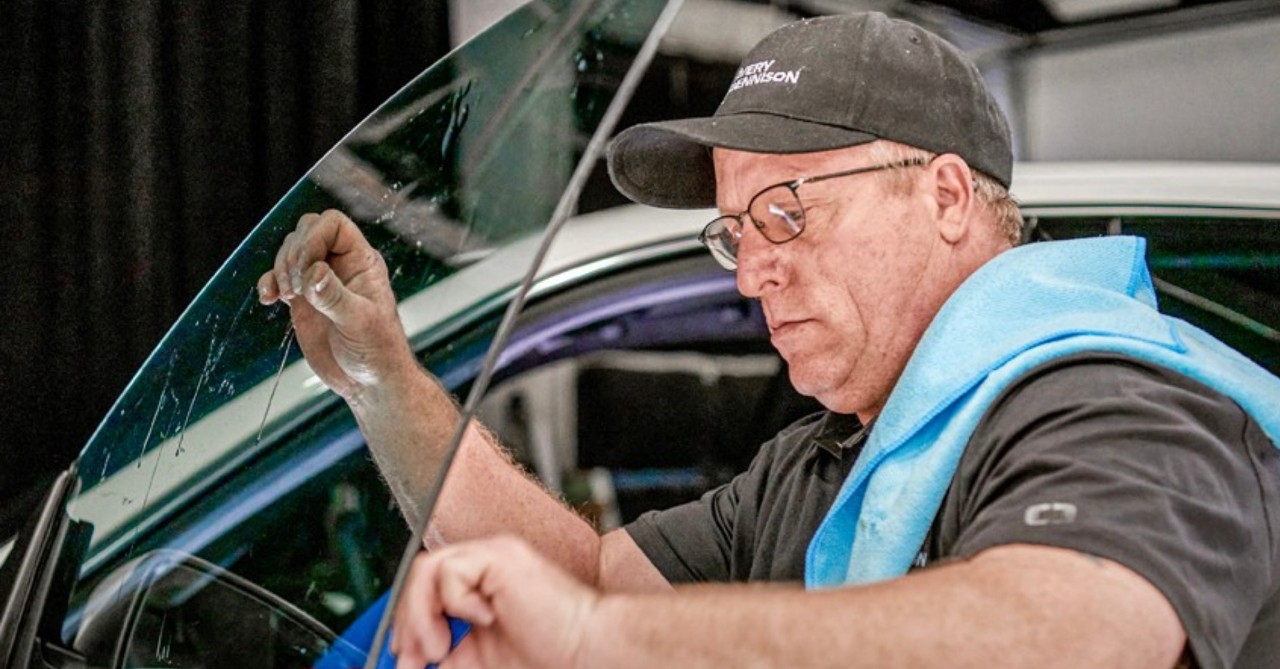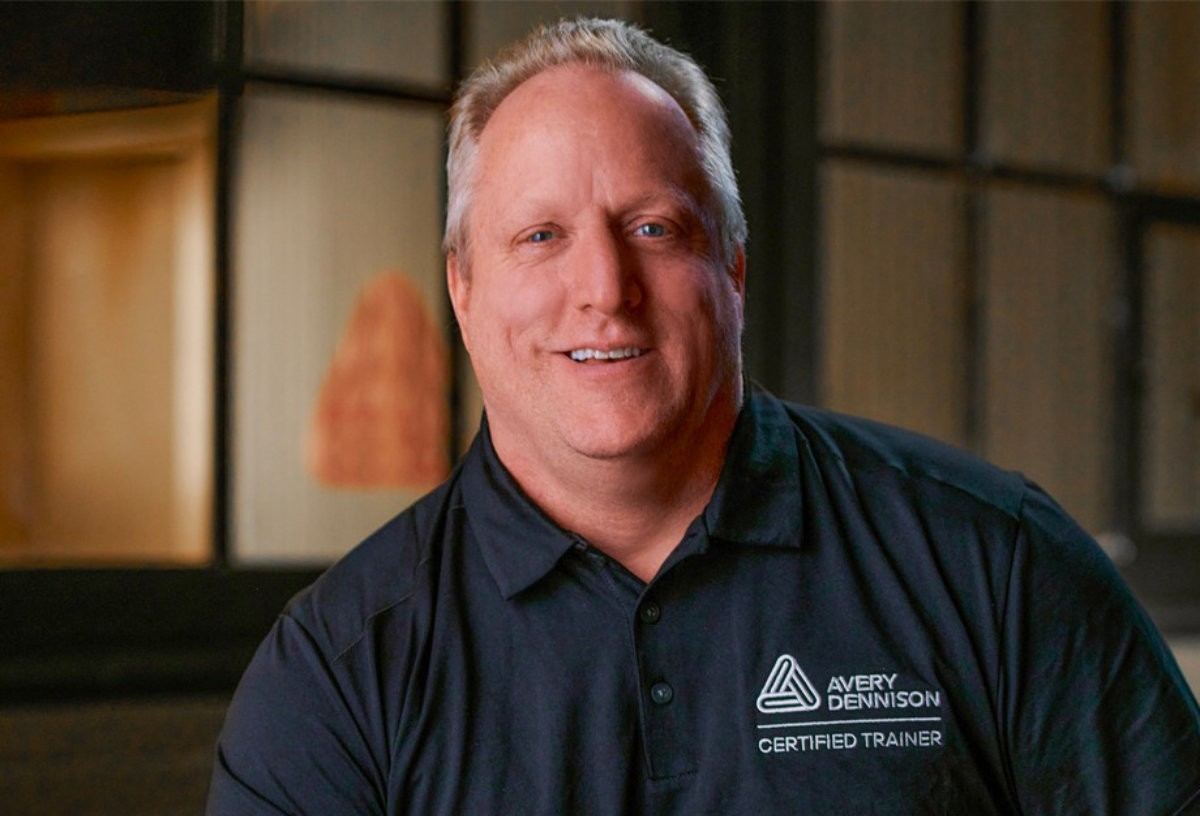What you need to know to purchase PPF for your car: a Q&A with Narayan Andrews
By Matthan Evans - Apr 05, 2024
Avery Dennison Graphics Solutions
May 10, 2024

Are you looking to improve your overall driving experience and add a distinctive look to your car? Or perhaps protecting yourself and your passengers from harmful UV? Maybe you’re interested in keeping your vehicle cool and comfortable while reducing glare? Regardless of the reason, if you are considering adding automotive window film to your vehicle, you probably have a few questions about the process. Many people are overwhelmed by the costs, the variety of film options, tint shades (VLTs) and installation available for automotive window films. For this reason, we sat down with Harold Nimtz, owner of House of Tint in Winslow, Arizona. Harold is our Avery Dennison Automotive Window Film training instructor, and has almost 35 years of experience in the industry.

Owner/Operator - House of Tint - Winslow, AZ. Harold Specializes in auto tint, vehicle wraps, store front and vehicle lettering. He has worked in the automotive industry since he was a freshman in high school and has been building clientele ever since. Harold has worked various shows around the country including SEMA. He opened his own business, House of Tint, in 2005.
Q: Harold, Could you explain what automotive window film and/or automotive tint is? And, is there a difference between the use of these two names?
Harold: No, there is no difference between the two names. It just depends upon where you are located in the world as to what you call it. But what automotive window film is, is a polyester product manufactured in the form of a film that is applied to glass that cuts out heat, uv and infrared rays from entering a vehicle.
Q: Why, in your opinion as a professional, are those window film benefits important for car drivers?
Harold: The window film cuts down on the heat gain coming into your car. If your car is sitting in the parking lot all day while you're at work it's not going to heat up as quickly. The window film is going to provide greater than 99% UV protection and slow down the fading of interiors, the dry rotting of package trays and seats and things like that. And, one of the biggest reasons is because it just looks cool.
Q: Absolutely. Speaking of aesthetics, from your perspective and experience, what are the most popular types of window film?
Harold: The most popular window film right now is ceramic. This is mainly because it's the “new” thing on the market, even though it's been around for quite some time. Ceramic window film has the highest heat rejection and does not interfere with antennas, tire pressure sensors, Bluetooth and other car features like metalized films and hybrid films tend to do.
Hybrid films are the oldest form of automotive window film technology out there. In addition to interfering with car features, hybrid films can also interfere with cell phone signals which can be a nuisance for drivers.
The last type is non metalized film, like a carbon film or a non-reflective film. These films don't have any metal in them either, but they are not as high a heat rejection as ceramic films.
Q: Could you outline some of the areas where films can be installed and if you have a recommendation on where it's appropriate for films to be installed?
Harold: I would recommend automotive window film on your vehicles back doors and back windows for sure. And depending on your state laws, I would recommend front doors as well with at least a 80% VLT film, that's almost perfectly clear. Keep in mind that each state has unique laws when it comes to tint. To view your state’s standards, you can visit the IWFA website.
Q: It seems like many vehicles purchased today already have tinted windows. Is that a correct assumption?
Harold: Actually, most of the vehicles that come from the factory have privacy glass, not a true tint. This means that car manufacturers aren’t actually providing full UV protection for interiors and passengers. It’s a real problem. People think they are protected from the sun, when in actuality they need to supplement with window tint film to be protected from harmful rays.
Q: So, if I'm coming into an automotive window film dealer and I have multiple options in front of me, what advice would you give to a car owner who is trying to select the right film for their car?
Harold: That will depend on what the car owner is looking for. If they want maximum heat rejection, I would definitely recommend ceramic. In addition to that, darker film doesn't always mean higher heat rejection. If using a higher end film, you can go with 35% of fairly light ceramic and get as much heat rejection as a standard dyed limo film, or a dark 5% film.
Alternatively, if someone is pursuing aesthetics only, they probably just want a dark color, and they don't typically care about heat rejection.
Q: You mentioned that darker films aren't always better, which brings me to my next question. Can you define what VLT means and how do I know which VLT is right for my car?
Harold: VLT stands for visible light transmission, and it's basically how much light the film allows to come through. So the lower the number, the less light transmitted. For example, a VLT of 5% is actually darker than a VLT of 50%. The 5% allows 5% of the light through the window, and the 50% allows 50% of the light to come through. Figuring out what VLT is right for you will depend on what state laws are and what you are looking for in terms of heat rejection and appearance. There are a lot of shops out there that unfortunately will just put whatever film you want, wherever you want. I am not one of those shops. I have nine grandkids who ride bikes and play in the street, and I want you to be able to see them because I love them.
I’ll give you an example of state law from my home state of Arizona. The VLT parameters are 33% plus or minus 3%. So when a film is adhered to the glass, it can meter no darker than 30%. Rear windows can be whatever VLT you want as long as your front windows meter at or above 30%. Alternately, in California, you can have whatever VLT you want on your back windows, but you can do nothing on your front windows.
Be sure to ask your local window film dealer and installer if the tint shade you prefer will be within your state’s legal limits. They should be knowledgeable about state laws, and of course, you can come informed by visiting the IWFA website as previously mentioned.
Q: Are there films that have UV protection and heat rejection properties that don't have a “tint” to them? Meaning they look more clear for those who don’t enjoy the look of dark films?
Harold: Yes. There are very high end ceramic films that are extremely light that will reject UV, for example Avery Dennison Shield IR. In fact, all tint across the board is gonna have greater than 99% UV rejection. The differences come in with ceramics, which blockout infrared heat, the darker VLTs on all films are where you get your glare reduction. You have to have a somewhat dark film to achieve glare reduction. If anybody could ever come up with a, you know, clear film that blocked out a hundred percent of the glare, you'd be a billionaire instantly. But unfortunately that does not exist at the moment.
Q: Can you tell us about your experience with Avery Dennison Automotive Window films specifically? In your business and also when you are conducting training sessions, which Avery Dennison Automotive Window films are you using?
Harold: At my shop, I use the Encore™ Supreme, which is Avery Dennison’s mid-level film. I use that as my entry level film. I also use their IR ceramic film called Encore™ Supreme IR as my high-end film and their Shield IR, which is their 80% VLT film. Those are the only options that I offer because a better/best scenario prevents customers from becoming too confused or bogged down with things like VLT details. From an installer point of view, Avery Dennison films all shrink and install the same across the board, which makes it nice and no need to change slip solutions.
Q: How long does a typical automotive window film installation take?
Harold: It depends upon the vehicle. There are some back windows on cars that are harder than others. But installing a full tint to front doors, back doors, quarter windows and the back window to an average four door like a Toyota Camry or Honda Accord, would be about an hour and a half to two hours on average.
Q: Is it typical practice to complete an installation in the same day or do folks drop their car off and come back the next day?
Harold: Most of the time it's a same day service, lasting only a couple of hours.
Q: How does pricing work for window film installation?
Harold: This is very difficult to answer because it varies across the country. There are some places in Florida, and I just use that as an example because you have all the ports there where shipping containers come in with oftentimes extremely cheap products. And people tint four door cars there for like $59, and again, you get what you pay for. But for a good film, four door cars start around $250 ish. And depending on the vehicle that price can go up to $1200-$1400 for ceramic films which are the most expensive.
Q: Do most window films come with a warranty? How does that work?
Harold: Nowadays almost all the manufacturers out there offer some type of warranty. Most of them are all “lifetime warranties.” Which means more for the installer as manufacturers will take care of them if any issues arise. On the consumer side, I would have them inquire about manufacturer warranties as well as any warranties provided by the installer on the labor side of things. For example here at my shop I provide a lifetime warranty on the labor on top of any manufacturer warranties.
If you are interested in learning more about automotive window film installation from Harold Nimtz, consider signing up for one of our Automotive Window Film training courses. For more information about automotive window film as an option for your car, to review Avery Dennison portfolio offerings and to find an installer near you, visit graphics.averydennison.com/awf.
More about Harold: Harold Nimtz has worked in the automotive industry since he was a freshman in high school and has been building clientele ever since, specializing in auto tint, vehicle wraps, store front and vehicle lettering, and has traveled the country working on large scale architectural jobs. He opened his own business, House of Tint, in 2005.
By Matthan Evans - Apr 05, 2024
By Matthan Evans - May 06, 2024